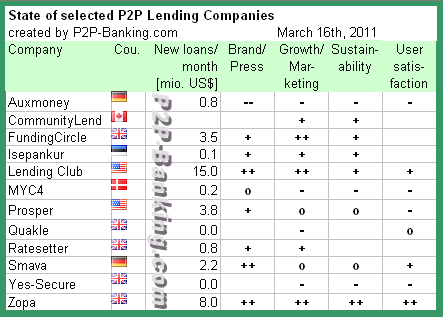Many Fintech startups compete with banks and other incumbents by offering easy to use and attractive user interfaces. They appeal to users because they offer a modern packaging for processes and at the same time work hard to make these core processes they concentrated on more efficient  (unbundling).
User interfaces are an important aspect for p2p lending marketplaces too. While a very innovative user interface might have contributed in winning the investor, once he registered he not only wants an easy to use user interface he also likes constancy. Sounds paradox?
Fact is, that some p2p lending marketplaces are not that easy to use and offer complex functionality e.g. auctions, secondary markets with discounts and premiums. The investor spends considerable time to learn how to use the functions efficiently. Once he has mastered to efficiently use all the features and reports to achieve good results he will dislike any major changes the marketplace introduces since these force him to “relearn†his way around and render his previously acquired level of experience worthless.
I have experienced this several times on multiple marketplaces. But you don’t have to take my word for it, just look at a forum after a major redesign and you won’t have to search hard to find lots of investors venting their negative opinions rather strongly.
Now knowing that p2p investors are creatures of habit, what could a p2p lending marketplace do to ‘feed’ those? Freezing in standstill is not an option. Even the most conservative investor expects the marketplace to evolve and offer new features.
My suggestions are:
- The platform should decide early on for a main navigation structure and stick with that. Changes and optimizations should subordinate to that structure and not change this main navigation
- Development of new features should take wishes of investors into account (do surveys) but not be driven by them entirely
- Test extensively before releasing. I am repeatedly surprised how many bugs there are in main features after a release (that is they show in main processes and not only in special constellations)
- Measure, measure, measure. It is sensible to do A/B testing for all larger changes measuring the performance of previously defined KPIs (e.g. bounce rate). If the new version performs worse than the previous version the team should be brave enough to scrap the new developed version even if that means time and cost spent for developing it is lost without an output
- If URLs change or cease to exist do an automatic redirect to the new URL
- Even if the marketplace does not encourage the use of tools and automation, it should not ignore the fact that some investors will develop tools and workflows that helps them to speed up their monitoring and investment. The marketplace should consider how the changed impact and process might impact these. The very least that can be done, is to inform investors in advance of an upcoming major change.

